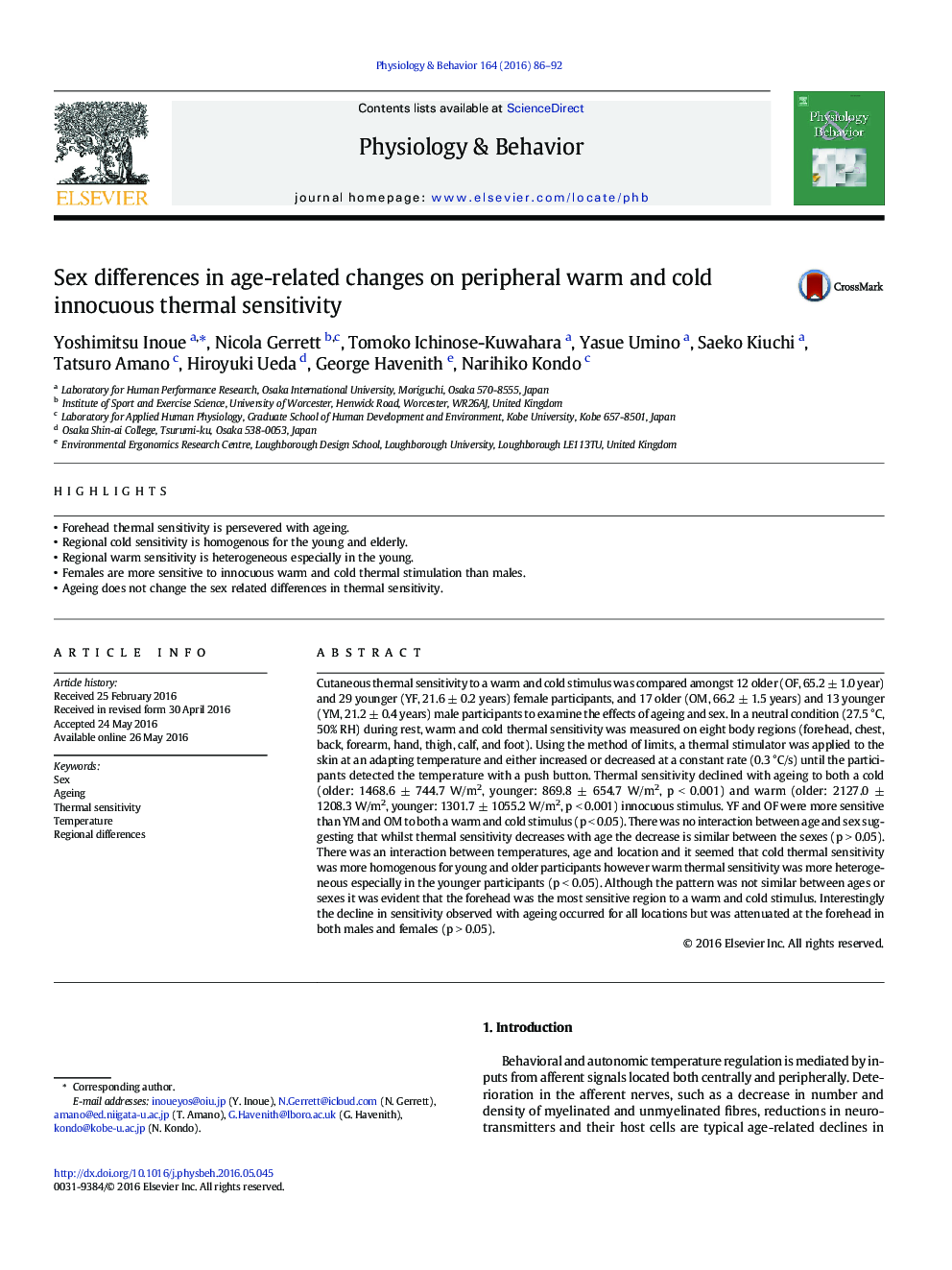| کد مقاله | کد نشریه | سال انتشار | مقاله انگلیسی | نسخه تمام متن |
|---|---|---|---|---|
| 5922591 | 1166279 | 2016 | 7 صفحه PDF | دانلود رایگان |
- Forehead thermal sensitivity is persevered with ageing.
- Regional cold sensitivity is homogenous for the young and elderly.
- Regional warm sensitivity is heterogeneous especially in the young.
- Females are more sensitive to innocuous warm and cold thermal stimulation than males.
- Ageing does not change the sex related differences in thermal sensitivity.
Cutaneous thermal sensitivity to a warm and cold stimulus was compared amongst 12 older (OF, 65.2 ± 1.0 year) and 29 younger (YF, 21.6 ± 0.2 years) female participants, and 17 older (OM, 66.2 ± 1.5 years) and 13 younger (YM, 21.2 ± 0.4 years) male participants to examine the effects of ageing and sex. In a neutral condition (27.5 °C, 50% RH) during rest, warm and cold thermal sensitivity was measured on eight body regions (forehead, chest, back, forearm, hand, thigh, calf, and foot). Using the method of limits, a thermal stimulator was applied to the skin at an adapting temperature and either increased or decreased at a constant rate (0.3 °C/s) until the participants detected the temperature with a push button. Thermal sensitivity declined with ageing to both a cold (older: 1468.6 ± 744.7 W/m2, younger: 869.8 ± 654.7 W/m2, p < 0.001) and warm (older: 2127.0 ± 1208.3 W/m2, younger: 1301.7 ± 1055.2 W/m2, p < 0.001) innocuous stimulus. YF and OF were more sensitive than YM and OM to both a warm and cold stimulus (p < 0.05). There was no interaction between age and sex suggesting that whilst thermal sensitivity decreases with age the decrease is similar between the sexes (p > 0.05). There was an interaction between temperatures, age and location and it seemed that cold thermal sensitivity was more homogenous for young and older participants however warm thermal sensitivity was more heterogeneous especially in the younger participants (p < 0.05). Although the pattern was not similar between ages or sexes it was evident that the forehead was the most sensitive region to a warm and cold stimulus. Interestingly the decline in sensitivity observed with ageing occurred for all locations but was attenuated at the forehead in both males and females (p > 0.05).
Journal: Physiology & Behavior - Volume 164, Part A, 1 October 2016, Pages 86-92
